
|
Alfred Hitchcock's Greatest Films of All-Time |
|
Notable examples of Hitchcock's early British suspense-thriller films included The Man Who Knew Too Much (1934), his first great spy-chase/romantic thriller The 39 Steps (1935) with Robert Donat handcuffed to Madeleine Carroll, and the best film of his British period - the mystery The Lady Vanishes (1938). Extending his work into the 1940s in a number of brilliant black-and-white films, Hitchcock continued to perfect his recognizable brand of suspense-thriller, producing Foreign Correspondent (1940), the haunting Best Picture-winning Rebecca (1940) about the strange romance between a young woman (Joan Fontaine) and an emotionally-distant rich widower (Laurence Olivier) - overshadowed by a vindictive housekeeper (Judith Anderson), Suspicion (1941) about a woman in peril from her own husband (cast against type Cary Grant), Saboteur (1942), Shadow of a Doubt (1943) - Hitchcock's own personal favorite and based upon the actual case of a 1920s serial killer known as 'The Merry Widow Murderer', Spellbound (1945), and Notorious (1946). In the 1950s, Hitchcock added technicolor to his still-brilliant dark and moody films, now with exotic locales and glamorous stars. He reached the zenith of his career with a succession of classic films: the suspenseful black and white Strangers on a Train (1951) about two train passengers: tennis pro Guy (Farley Granger) and psychopath Bruno (Robert Walker), who staged a battle of wits over a proposed exchange of murders, Dial M For Murder (1954), with Ray Milland as a villainous husband who attempted to murder his wealthy wife (Grace Kelly) - also shot in 3-D, Rear Window (1954) - a masterful study of voyeurism confined to a Greenwich Village apartment complex and courtyard, with Grace Kelly as a seductive girlfriend to beau James Stewart, To Catch a Thief (1955), a lightweight thriller about cat burglars set in S. France, The Man Who Knew Too Much (1956) - a remake of Hitchcock's own 1934 spy thriller, Vertigo (1958), one of Hitchcock's greatest films, with James Stewart as a retired police detective who became obsessed with the disturbed enigmatic 'wife' (Kim Novak) of an old friend, and the entertaining, romantic comedy/spy thriller North By Northwest (1959) about an advertising executive (Cary Grant) mistakenly acquiring the identity of a fictional governmental agent, and his encounter with icy blonde (Eva Marie Saint). After Hitchcock's classic films of the 1950s, his films were wildly uneven, although he produced the shocking and engrossing thriller Psycho (1960) about a loner mother-fixated motel owner and taxidermist - with the classic set piece (the 'shower scene'), and the suspenseful and strangely terrifying The Birds (1963) about a invasion of birds in a N. California coastal town and its effect upon archetypal cool blonde Tippi Hedren. His film Frenzy (1972), Hitchcock's first British film in almost two decades, was given an R rating for its vicious and explicit strangulation scene. Hitchcock's films often placed an innocent victim (an average, responsible person) into a strange, life-threatening or terrorizing situation, in a case of mistaken identity, misidentification or wrongful accusation (i.e., in The 39 Steps (1935), The Wrong Man (1956), and in North by Northwest (1959)). He also utilized various cinematic techniques (i.e., the first British 'talking picture' - Blackmail (1929), the extreme zoom shot of the key in Notorious (1946), the glowing glass of milk in Suspicion (1941), the prolonged cross-cutting between a tennis match and sewer-grating in Strangers on a Train (1951), the virtuoso set-piece of the crop duster in North by Northwest (1959), the montage in the shower sequence accentuated with composer Bernard Herrmann's screeching violin score in Psycho (1960), the dolly-zoom shots in Vertigo (1958), or the heightening of anticipation with the long pull-back shot from inside a building to the outside and across the street in Frenzy (1972)). He would often interweave a taboo or sexually-related theme into his films, such as the repressed memories of Marnie (Tippi Hedren) in Marnie (1964), the latent homosexuality in Strangers on a Train (1951), voyeurism in Rear Window (1954), obsession in Vertigo (1958), or the twisted Oedipus complex in Psycho (1960). Hitchcock's Most Popular Motifs: All of Hitchcock's films contained a number of motifs or themes - the most popular were the following:
Visually-expressive motifs were also Hitchcock's specialty (i.e., the surrealistic dream sequences in Spellbound (1945), the key in Notorious (1946), the staircase or the use of profiles and silhouettes in Vertigo (1958), the strangulation-murder reflected in the victim's fallen glasses in Strangers on a Train (1951), the concept of "pairs" and guilt transference in Shadow of a Doubt (1943)), or the making of technically-challenging films (such as Lifeboat (1944) and Rope (1948)).
In many of his films, there was the inevitable life and death chase concluding with a showdown at a familiar landmark (for example, London's Albert Hall in The Man Who Knew Too Much (1956), the British Museum in Blackmail (1929), the Statue of Liberty in Saboteur (1942), the UN and Mount Rushmore in North by Northwest (1959), the assassination attempt atop Westminster Cathedral's Tower in Foreign Correspondent (1940), and the Golden Gate Bridge in Vertigo (1958)). He also reveled in tight and confined spaces, to heighten emotion (i.e., Lifeboat (1944), Rope (1948), or Rear Window (1954), etc.) or restrictive train journeys (i.e., The Lady Vanishes (1938), and North by Northwest (1959), etc). See separate page for listing of all of Hitchcock's MacGuffins. The famed director often capitalized on a 'red herring' or gimmicky plot element to catch the viewer's attention - dubbed a McGuffin (or MacGuffin), that would propel the plot along its course. Usually, the McGuffin initially appeared to be of utmost importance, but functioned to intentionally misdirect the audience - it then quickly faded into the background and ended up being trivial, irrevelant, or incidental to the film's story. The MacGuffin normally referred to the mystery to be solved (or the fugitive's innocence to be proven), or an object, or some other kind of motivator. Hitchcock would make a signature cameo appearance in his feature films, beginning with his third film The Lodger (1927), although his record was spotty at first. After 1940, he appeared in every one on his films, except for The Wrong Man (1956). |
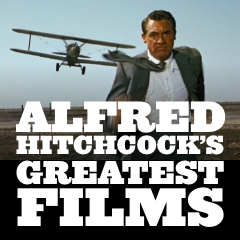
|
The linked titles below refer to reviews (with screenshots) in the "Greatest Moments and Scenes" section of the site |
|||
 The Man Who Knew Too Much (1934) |
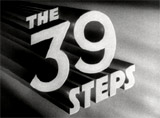 The 39 Steps (1935) |
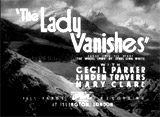 The Lady Vanishes (1938) |
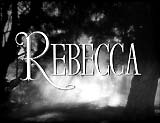 Rebecca (1940) |
 Foreign Correspondent (1940) |
 Suspicion (1941) |
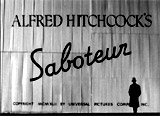 Saboteur (1942) |
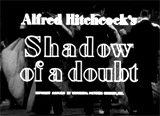 Shadow of a Doubt (1943) |
 Lifeboat (1944) |
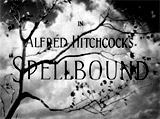 Spellbound (1945) |
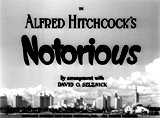 Notorious (1946) |
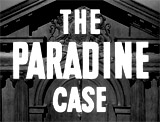 The Paradine Case (1947) |
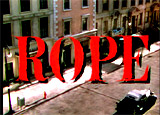 Rope (1948) |
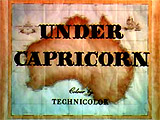 Under Capricorn (1949) |
 Stage Fright (1950) |
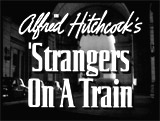 Strangers on a Train (1951) |
I Confess (1953) |
 Dial M For Murder (1954) |
 Rear Window (1954) |
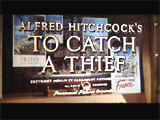 To Catch a Thief (1955) |
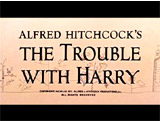 The Trouble With Harry (1955) |
 The Man Who Knew Too Much (1956) |
 The Wrong Man (1956) |
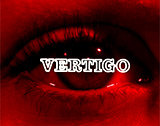 Vertigo (1958) |
 North by Northwest (1959) |
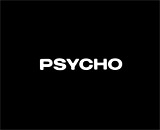 Psycho (1960) |
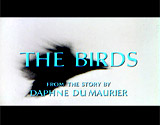 The Birds (1963) |
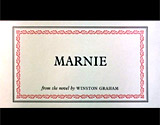 Marnie (1964) |
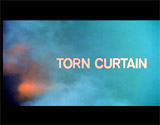 Torn Curtain (1966) |
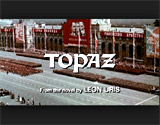 Topaz (1969) |
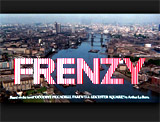 Frenzy (1972) |
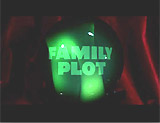 Family Plot (1976) |